Grow Amaranthus harive soppu on your roof top without soil using simplified hydroponics by Pritham 'metal farmer' D'Souzaamaranthus or harive soppu as its popularly known as in Kannada is a leafy vegetable grown for its excellent taste and high nutrition. its also a very profitable as the crop can be harvested within 21 days, thus fetching better returns in a shorter time.
i have grown the crop first in tubs with coconut peat and rice husk substrate, & later i have grown it in floating beds.
i used a spoonful of seeds in a single grow tub. i spread the seeds evenly on the surface & watered it using my own mixture of sea weed based algae gel for the first few days till it germinated and later for a few more days till it was big enough. then i switched on to the nutrients provided by CV.

the photo above shows germination in progress just 2 days after sowing. in the field, germination can be noticed after 4 days. the above photo was taken on Jan 31 2009
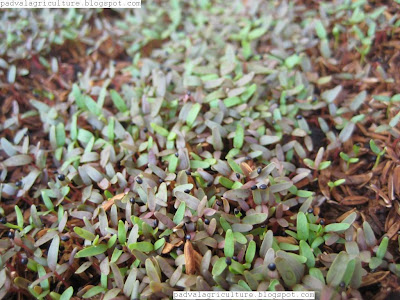


the above 3 photos were taken on Feb 2, 2009. notice nearly every seed i sowed, has germinated perfectly.
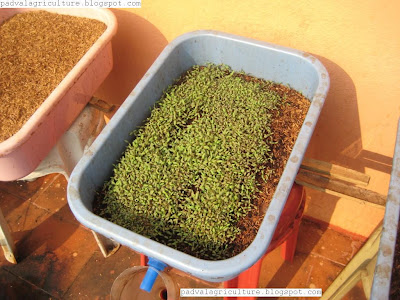
amaranthus loves sunlight. so the tub was placed such that it receives max sunlight for most part of the day as seen above

the above photo was clicked on feb 9, 2009. notice in detail, the black smudge was due to the algae gel i used for the first 10 days of plant growth. later when i switched over to the nutrients provided by CV, the leaves appeared much greener & distinct, without the black spots

harvesting in amaranthus is generally done within 21 days after sowing, but there is not rule here. some people keep the plant for as long as 45 days as seen below, till the leaves become very large & stem hardens a bit. for some people , harvesting is preferred when the plant is very tender, just 6 to 8 inches in height.
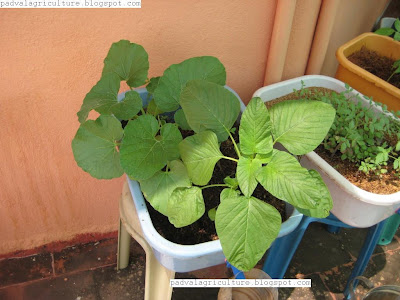
the photo above shows individual amaranthus plant grown in same tub as bottle gourd. the plant can either be cut at the stem level a few inches above the ground level or whole plant is uprooted & bundles are made and sold.
Amaranthus in Floating Bed by Pritham 'metal farmer' D'Souzai wanted to experiment with amaranthus just like in lettuce, if it works in floating bed. for this i used a regular dish washing sponge and made a deep cut in the middle as shown below.

since the plant is very thin, i took 10 to 15 plants together as seen below

then i placed them in between the deep cut i made on the sponge as seen below and placed them in the thermocol sheet which had holes made previously to accomodate the plants.
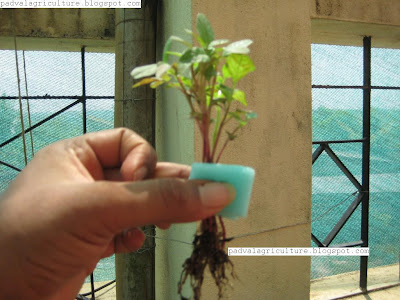


the above photos were taken on march 12, 2009.

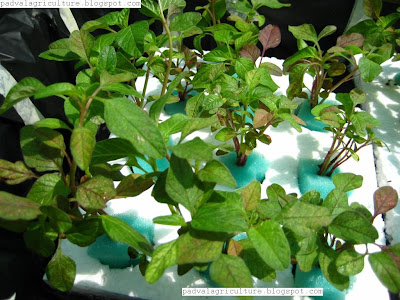

the above 3 pics were taken on march 21, 2009. the growth is a bit slower, but if one notices, the leaves have turned a lot greener than they were on the first day of transplanting.
advantages of floating beds- portable beds, can be taken anywhere
- since the water has nutrients, no need to add more nutrients unless deficiency is observed
- since there is no soil, no question of soil borne pathogens or pests.
Most important poinf for float beds- daily aeration is a must as the roots need to get as much oxygen as possible. this can be done by splashing the water and creating bubbles as seen in the pic below

- this splashing of water creating air bubbles destroys any kind of insect eggs like mosquito eggs if any, in addition to providing oxygen to the roots.
- minimum 2 minutes of splashing waterdaily has to be done, i splash water twice daily for better aeration.
All photos and data by pritham dsouza. to view photos in original size, click on photo to enlarge